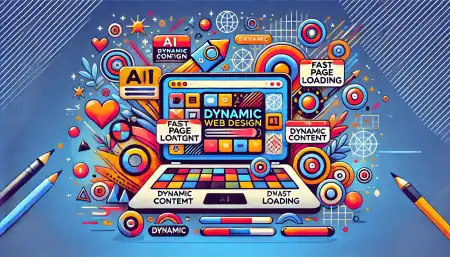Table Of Contents
1. AI-Powered Personalized Web Design
AI is increasingly integrated into web design, allowing for real-time personalization based on user behavior. This trend is transforming the way websites interact with visitors, offering tailored content and layouts that adjust according to the user’s preferences. For example, e-commerce websites can display products a user has previously viewed or recommend items they are likely to be interested in, enhancing conversion rates.

2. Dynamic User Experiences: Kinetic Typography and Micro Interactions
Kinetic typography and micro interactions are becoming essential elements of web design in 2024. These features not only add visual appeal but also enhance user engagement by encouraging longer site visits and more interaction with content. These dynamic elements, such as moving text or interactive animations, are especially effective on landing pages and campaign sites, where they help communicate a brand’s message more effectively.
3. Mini-Sites and Fast Loading Speed
Mini-sites are gaining popularity in 2024, especially for small businesses and freelancers who need to deliver information quickly and efficiently. These pages strip away unnecessary elements, focusing on fast loading times and seamless user experiences. With mobile optimization becoming increasingly important, mini-sites are an excellent solution for providing key information on the go.
4. Retro Design and Geometric Patterns
While minimalism has dominated web design in recent years, 2024 is seeing a resurgence of retro design. Bold colors, vintage fonts, and geometric patterns are making a comeback, drawing inspiration from the 70s and 90s. These elements bring a sense of energy and creativity to websites, making them stand out visually and capturing the attention of visitors.
5. AI and Enhanced Accessibility
Accessibility is no longer an option but a necessity in modern web design. AI is playing a crucial role in improving accessibility by automating tasks like optimizing color contrast or generating content suitable for screen readers. These features not only benefit users with disabilities but also improve overall user experience and boost SEO performance.
6. Faster Page Loading with Optimized Content
Page speed remains a key factor in web design for 2024. Users quickly lose interest in sites that take more than a few seconds to load. Techniques like lazy loading, which loads content only when needed, help enhance performance, especially on image- or video-heavy pages. This approach ensures a smoother browsing experience and helps keep users engaged.
By embracing these trends, your website can deliver a more personalized, dynamic, and accessible experience for users in 2024. Whether you’re updating an existing site or building a new one, leveraging these trends will help set you apart and provide a unique online experience.

